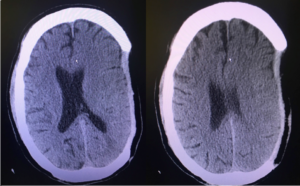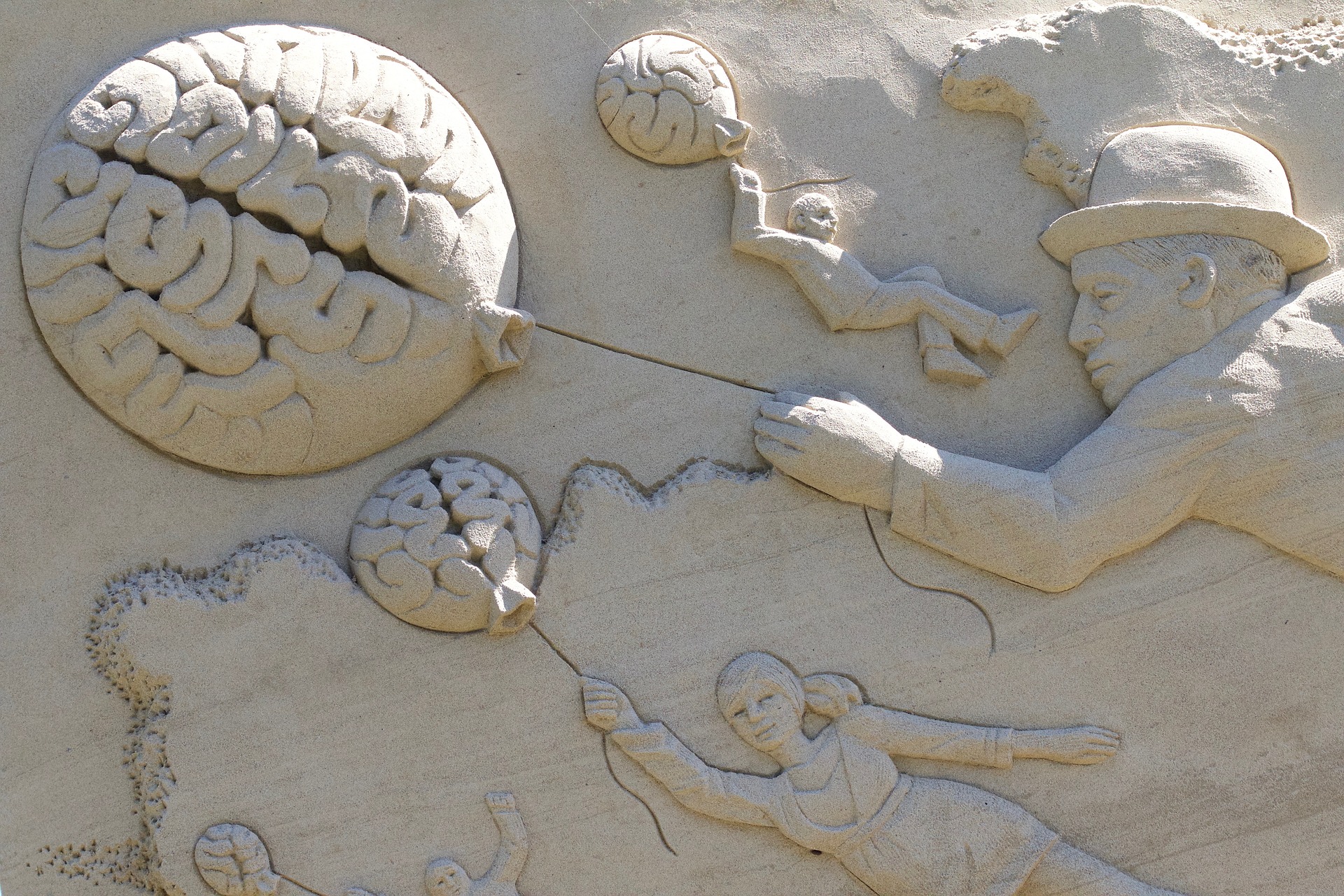CC: Altered mental status and frequent falls
HPI: 55 y/o male presents from rehab with altered mental status (lethargy and agitation) and frequent falls for the past 2 days. Patient has a PMHx of large traumatic subdural hematoma 9 months ago treated with a craniectomy, seizure disorder, and HTN. Patient complains of headache and is a difficult historian. Pt does answer some questions appropriately.
Pertinent PE and Vitals: BP 121/81 HR 98 RR 16 Temp 98.1 100% on RA
GCS=14 and in no acute distress
L pupil dilated at 4 mm and nonreactive. R pupil 1 mm and reactive.
Pt. with moderate R arm and leg weakness (patient has baseline weakness but this is worse).
Pertinent Labs (if any): Unremarkable workup
Imaging

Working Diagnosis at time of Disposition Sinking Skin Flap Syndrome (also known as Syndrome of the Trephined) with possible Paradoxical Herniation
ED & Hospital Course Patient was admitted and received neurology and neurosurgical consultations. Medications were adjusted to control agitation. It is questionable per the consultants if his symptoms were due to paradoxical brain herniation. Plan is for an outpatient cranioplasty.
Pearls & Takeaways
- Sinking skin flap syndrome is a delayed complication of a decompressive craniectomy. As the herniated brain tissue recedes, the skin flap from the surgical site can become sunken.
- Symptoms include headaches, dizziness, seizure, and mood changes.
- Symptoms worsen when is head elevated vs reclined; treatment option is cranioplasty. Symptoms are much worse in an upright posture.
- If atmospheric pressure exceeds intracranial pressure, patients can get paradoxical herniation and midline shift. This is more of an emergency and symptoms include focal deficits, pupillary changes, and alterations in consciousness.
- Paradoxical herniation is a state of low intracranial pressures; therefore traditional measures to treat midline shift and ICP will worsen the condition such as mannitol, hyperventilation, etc.
- Treatment of sunken skin flap with paradoxical herniation is to elevate the intracranial pressure, including Trendelenburg position, hydration, and clamping of any CSF drains. Definitive treatment is cranioplasty.
